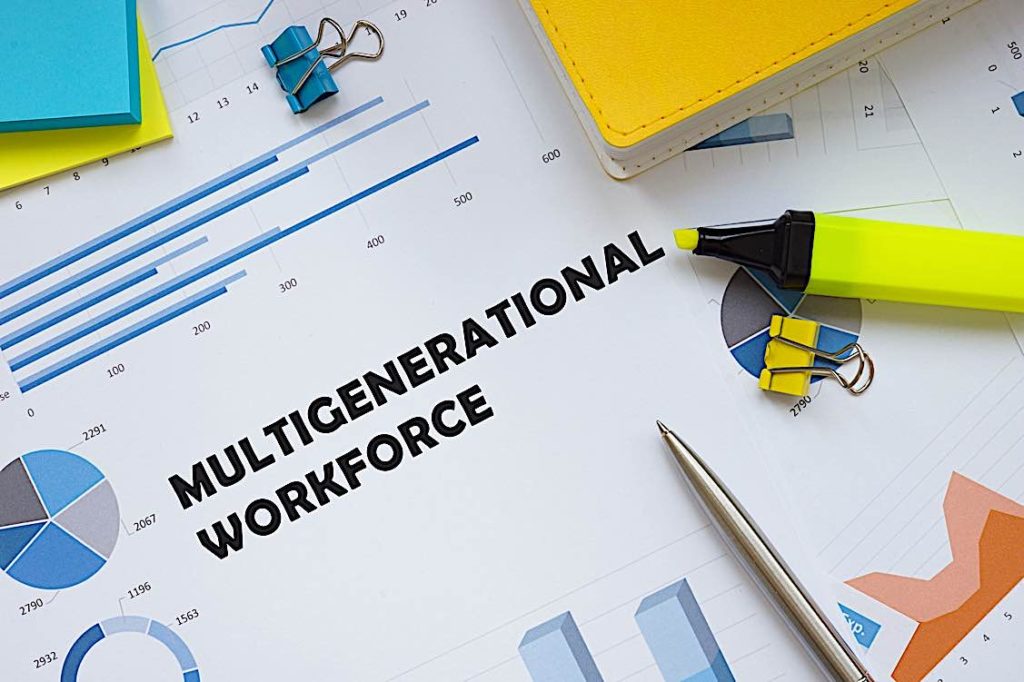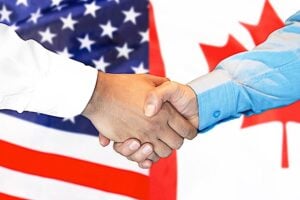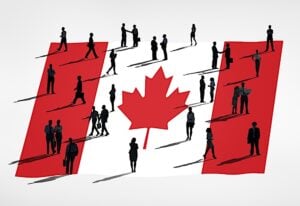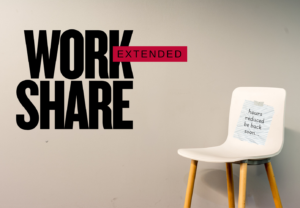
Making the most of a multigenerational workforce
In today’s workplace, as we tend to live longer than ever and retire later, it’s common to find employees spanning several generations working together. And while this can bring with it a whole host of challenges, it can also be leveraged as a strength.
Different generations tend to have different perspectives, values, and work styles. That can either lead to tension and conflict or, when managed appropriately, a multigenerational workforce can be a significant asset. But do we know how to manage the four generations that currently coexist in the workplace?
Are employers “age-friendly”?
The Transamerica Institute, a private nonprofit foundation dedicated to researching and advocating for retirement security, recently published a report on employment and retirement trends in the post-COVID19 pandemic world. [1]
Their report included the findings of two surveys they recently carried out;
- A survey of 1,874 employers took place in November 2021 to understand how they are adapting to the new realities and challenges of a post-pandemic workforce
- The 22nd Annual Transamerica Retirement Survey polled 5,493 workers in for-profit companies between October and December 2021
Here are some of the report’s most relevant findings:
“Age-friendly” employers
The studies asked whether employers could be considered to be “age-friendly,” regarding whether they offered the proper work arrangements, training, and opportunities for employees of all ages to succeed in their roles.
The results showed that most employers (84%) believe they are already age-friendly. In contrast, just two-thirds (65%) of employees feel that their workplace is age-friendly, which shows a significant disconnect between employer and employee perceptions.
D&I policies on age
When it comes to Diversity and Inclusion (D&I) policies, it’s clear that employers still have some way to go to consciously make their workplaces genuinely inclusive for all generations. Only 34% of employers have a formal D&I policy that explicitly includes age among the protected demographic characteristics. However, another 29% of employers stated that they plan to adopt a D&I policy statement that tackles age in the future.
Flexible work arrangements
One policy that has proven to be critical in supporting the needs of employees across generations is flexible work arrangements. By allowing employees to control when and where they work (within certain limits, of course), employers can make it easier for employees to manage their work-life balance and handle their personal responsibilities while still getting their job done.
Transamerica’s report found that over nine in ten employers (92%) offer at least one type of flexible work arrangement, with the most popular being flexible work schedules (provided by 60% of employers), closely followed by the ability to adjust working hours (54%) and to telework or work from home (51%).
Of course, the larger the company, the more likely they are to offer these types of arrangements as they have the resources and scale to accommodate more flexibility in its workplace.
Employees as caregivers
Another policy that can be critical when managing a multigenerational workforce is offering programs to support employees that have to act as caregivers for elderly parents or loved ones suffering from illness.
This is an increasingly common issue as the population ages, and employees may find themselves having to take on more responsibility for the care of their parents or grandparents, which can clash with their work commitments.
According to the report, eight in ten (80%) employers offer some form of program to support caregiving employees. However, again, larger companies are more likely to provide this type of support than smaller ones.
Older job applicants
It’s clear that there are many benefits to having a multigenerational workforce. But are older job applicants at a disadvantage?
The employment nonprofit Generation found that over six in ten (63%) jobseekers aged 45 or up are unemployed for over a year, nearly double the rate for 18-24-year-olds (36%). [2]
Transamerica found that almost six in ten employers surveyed (59%) reported giving either a “great deal” or “quite a bit” of consideration to applicants aged 50 and up versus younger applicants.
Career development
Once employees are in the door, it’s essential to give them the opportunity to develop and progress in their careers. In this sense, over half of employers surveyed (58%) state that their company emphasizes professional growth and development opportunities for employees of all ages.
Despite the challenges that come with managing a multigenerational workforce, it’s clear that there are many benefits to having employees of all ages working together.
By understanding the needs of employees across generations and implementing policies and programs to support them, employers can create a workplace that works for everyone and produces the best results for their business.
The benefits of a multigenerational workforce
Having employees of different ages can bring a wealth of benefits to your business. Here are some of the advantages of having a multigenerational workforce:
- It provides traditional business skills. Older generations often have a wealth of experience and knowledge to offer younger employees, coming from their previous work and life background. They can share their expertise in areas such as customer service, sales, and marketing.It can bring new perspectives and innovation. With different ages comes different life experiences, which can provide valuable insights and perspectives on business issues. This can lead to more innovative solutions and help your business stay ahead of the competition.
- It can improve communication. Employees from different generations can help improve communication within your business. For example, younger employees may be more comfortable using technology for communication. In comparison, older employees may be better at face-to-face communication, which can be critical when building long-term client relationships or networking with other businesses.
- It can create a more balanced workplace. A multigenerational workforce can help create a more balanced workplace. With different ages comes different perspectives, which can lead to more open and honest discussions about work-related issues. This can ultimately help create a more positive work environment for all.
- It creates a more diverse workplace. Diversity in the workplace is vital for many reasons, including improved decision-making and creativity. Diversity of ages is just one aspect that companies should strive to achieve.
- It can improve productivity. You can create a more productive workplace by leveraging employees’ strengths from different generations so that they can work together more effectively.
- It can reduce employee turnover. A multigenerational workforce can help reduce turnover, as employees of all ages are more likely to stay with a company that values their contributions and provides growth opportunities.
- It gives the opportunity for mentoring. A multigenerational workforce can provide opportunities for employees to mentor each other, helping them to develop their skills and knowledge in a way that no formal training can provide. This can benefit both the mentor and mentee, as it can lead to career advancement for both parties, an increased sense of value, and increased job satisfaction.
Employers already implementing programs
The Transamerica report found that many employers are already implementing policies and programs to reap the rewards of lifelong learning that come from having a multigenerational workforce.
- Some of the most popular initiatives include mentorships (49%),
- on-the-job training (45%)
- and internships (36%).
- However, only a quarter of employers polled offered specific training aimed at preventing age discrimination by specifically addressing generational differences.
Supporting older employees to stay with your business
When it comes to employee retention, it’s essential to keep all employees engaged and motivated to stay with your business.
This is especially true for older workers, who may be considering retirement and sometimes feel their skills are no longer valued in the workplace.
Three out of four (74%) employers expect that many employees will continue to work beyond the traditional retirement age of 65, either full-time or part-time and over half of the employees (57%) are planning to prove them right. This means that it’s more important than ever to support older employees who want to continue working.
Employers expect older workers to stay healthy and keep their relevant skills up to date so that they can carry on making productive contributions to the business.
In that respect, here is what employees are doing today:
- Staying healthy (54%)
- Keeping their skills relevant (47%)
- Taking classes to learn new skills (26%)
- Networking to meet new people (26%)
These numbers clearly show that employees are interested in staying in the workforce longer and are taking proactive steps to ensure they’re able to do so, but they need support from their employers to make it happen.
Businesses that want to keep their older employees should consider implementing policies and programs that will help them stay healthy, keep their skills relevant, and continue contributing to the business in a meaningful way.
With today’s workforce planning to live to 85 as the median age and with more people retiring later in life, employers need to understand how to make the most of a multigenerational workforce.
By encouraging open communication and respect between employees of all ages, workplaces can improve productivity, creativity, and morale. Employers should also consider implementing policies that are inclusive of all ages, such as Diversity and Inclusion policies. In doing so, they can create a workplace that is truly welcoming and supportive for all, retain top talent, and benefit from the collective knowledge and experience of employees from all generations.
Diversity and inclusion in the workplace for all, including employees of all ages, is not just a moral imperative, but it makes good business sense.
Sources
[1]: https://www.transamericainstitute.org/docs/default-source/research/emerging-from-the-covid-19-pandemic—the-employers-perspective-report.pdf
[2]: https://www.hrreporter.com/focus-areas/diversity/why-does-ageism-persist-in-recruitment/358016


 Our HR solutions experts can recommend the right mix of HR outsourced services to make your entry into Canada easier.
Our HR solutions experts can recommend the right mix of HR outsourced services to make your entry into Canada easier.  Pivotal Employment Management Services co-hires your workforce, simplifying entry of your business in Canada.
Pivotal Employment Management Services co-hires your workforce, simplifying entry of your business in Canada. 















